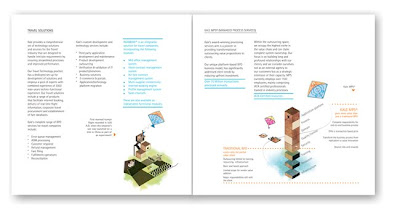"After 70 years of independence, an individual in India even today spends an average life, a life trying to make ends meet... worrying about the roof on his head, clothes on his body and food to eat. Who has the time and interest to know what is 'design' and what can it do?
The famous Stefan Sagmeister says "design can touch lives".
Did he mean Indian lives as well..? I mean, thank God it doesn't touch lives as directly as a doctor can otherwise most designers here would be in jail. "A seemingly harmless chat with a friend also a product designer, left me thinking hard for self defense. I know this country has a long way to go to set things in order where there is chaos, dirt, pollution and terrorism to deal with high on priority.
But how does one tell this country of millions and some self proclaimed DTP operators who call themselves designers, that it is criminal to do so. A
rangoli floor pattern, or somehow just fitting text together with a picture in an advertisement or poster is not design, nor is, as resourceful as it may sound, using washing machines in Ludhiana (Punjab) to make
lassi (a drink made from churning curd and milk). Design is also not something '
phoren' or something luxurious or even exotic. Aping the west might make it look slick, but neither is it authentic nor effective in the same context as India. And believe it or not, good design isn't always expensive either. Look at how cheap and efficient is the famous, tiffin service or
the dabbawallas in Mumbai function.
Design is not just about creating a pretty picture nor is it just about function. It is a sensitive activity of creating that fine balance between the two. The good news is that more and more people are now willing to 'experiment' with design as they can see its long term benefits.
Just as new is the concept of design here, India is by itself charming, incredible, exotic and chaotic to an outsider. Nobody really has an idea as to what this country really is. Tourists visit India and pick up pretty pictures called miniatures, if fascinated by the hindi language they pick abuses first, local travel and they have no idea whatsoever.
I wanted to showcase my country through a range of memorabilia that was designed and illustrated for a Delhi based design studio during my diploma project in 2006. Here is what I found was available in markets and at tourist destinations and was projected as being Indian...
 Manish Arora's projection of India as a Kitch culture
Manish Arora's projection of India as a Kitch culture Pop Ganesha bags
Pop Ganesha bags Tantra's tees
Tantra's tees A land of snake charmers
A land of snake charmersI saw images and images that were India of course but I truly believed the real India lay behind the exotica and
kitch. When the image and symbolism in this country is considered sacred (tantra for example) then it must definately go beyond the image and be able to communicate inforamtion that is engaging and enlightening.
After studying and researching on the Indian visual culture I came up with a set of illustrations with brief narratives that took the visuals beyond the context of a mere image.
I do hope they can touch somebody ..somewhere...

"Ambassador of India", "Auto", "For Hire", "Welcome, Keep Distance": T-shirts, "Table mats with Hindi proverbs", " Mouse pads depicting games of Indian origin inspired from Indian folk art", "Calender deconstructing miniature painting's popular subject of different moods of love with reference to the heroine or the Ashtanayikas",
iconic badges and many more.
It's time Indians take pride in who they are, where they come from and design needs to develop and evolve into a language that can be placed on the globe and is truly made in India.













